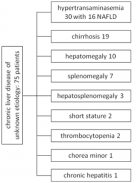Abstract
Review Article
Victim of violent death: what is the role of alcoholemia?
Ivan Dieb Miziara* and Carmen Silvia Molleis Galego Miziara
Published: 25 August, 2021 | Volume 5 - Issue 1 | Pages: 048-052
Introduction: The tendency to impulsive behaviors and/or violence is exacerbated after alcohol consumption. Still, the relation between alcohol/violent deaths reported in the literature is not accurate, and in general, alcohol is only seen as a trigger to aggressive actions. The relationship of the victims with their blood alcohol is less studied. They were especially concerned about the role of alcohol as a risk factor for victims of unnatural death. Thus, our goal is to check the influence of alcohol in victims of violent deaths as homicides, suicides, and accidents.
Materials and methods: Retrospectively the medical records of 805 autopsies performed at the Institute of Forensic Medicine (IML) of Franco da Rocha, in the period 2001 to 2017 were reviewed. The variables studied were sex, age, types of violent death rates, and alcohol - these were considered positive when above 0.3 mg/ml.
The dosage of blood alcohol concentration (BAC) was performed using samples of 10 ml of blood collected at necropsy, is preferably taken from the cardiac chambers or of the right femoral vein. Dosages of alcohol in blood samples were done in the Forensic Toxicology Center of the IML by gas chromatography, using the technique of separation “headspace” and double column.
Results: Drug testing for alcohol was available for 488 (79.1%) of 617 necropsies. Of the 617 subjects studied, 532 (85.7%) were male, and 85 (13.8%) were females (with high rates of adolescents). The vast majority (n = 230) were killed, and 40.5% of victims had BAC above 0.3 mg/ml of blood. Traffic accidents came next, accounting for 181 deaths, with 41% of victims presenting positive BAC.
Discussion: High blood alcohol levels of the victims were associated mainly with the genesis of accidents (drowning, falls, traffic, aspiration/ smothering) and murder (with impaired ability to resist or by causing the release of impulses to engage in violent situations), about 40% of cases.
Conclusion: Our results indicate that alcohol abuse is a risk factor for victims of violent death. In these cases, alcohol has two types of action. Direct: contributes to accidents of various kinds - from traffic by decreasing powers of concentration, attention, and loss of reflexes, to other types of accidents such as drowning, falls, swallowing disorders causing airway obstruction, and mechanical asphyxia. And they were indirect, making it easier for individuals to engage in conflict (and thus become victims of crimes).
Read Full Article HTML DOI: 10.29328/journal.jfsr.1001027 Cite this Article Read Full Article PDF
References
- Ministério da Saúde. Sistema de Informação sobre Mortalidade. 2010. http://www2.datasus.gov.br/DATASUS/index.php?area=040701
- Lockemann U, Heinemann A, Wischhusen F, Ewerwahn J, Püschel K. Frequently misinterpreted blood alcohol concentrations in (sudden) natural and unnatural death. Versicherungsmedizin. 1995; 47: 15-17. PubMed: https://pubmed.ncbi.nlm.nih.gov/7709500/
- Enache A, Chatzinnikolaou F, Enache F, Enache B. The analysis of lethal traffic accidents and risk factors. Legal Medicine. 2009; 11: S327-S330. PubMed: https://pubmed.ncbi.nlm.nih.gov/19254871/
- Abel EL, Zeindenberg P. Age, Alcohol and violent death: a postmortem study. J Stud Alcohol. 1985; 46: 228-231. PubMed: https://pubmed.ncbi.nlm.nih.gov/4010300/
- Jena S, Mountany L, Muller A. A demographic study of homicide-suicide in the Pretoria region over a 5 year period. Journal of Forensic and Legal Medicine. 2009; 16: 261-265. PubMed: https://pubmed.ncbi.nlm.nih.gov/19481707/
- Skibin L, Bilban M, Balazic J. Harmful alcohol use of those who died a violent death-The extended region of Ljubljana 1995-1999. Forensic Sci Int 2005; 147: S49-52. PubMed: https://pubmed.ncbi.nlm.nih.gov/15694729/
- Fonseca AM, Galduroz JCF, Tondowski CS, Noto NA. Alcohol-related domestic violence: a household survey in Brazil. Rev Saúde Pública 2009; 43: 743-749. PubMed: https://pubmed.ncbi.nlm.nih.gov/19722004/
- Martín FM. La Violencia en la pareja. Rev Panam Salud Publica.1999; 5: 245-257.
- Hall J, Goodall EA. Alleged drug facilitated sexual assault (DFSA) in Northern Ireland from 1999 to 2005. A study of blood alcohol levels. J Forensic Legal Med. 2008; 15: 497–504. PubMed: https://pubmed.ncbi.nlm.nih.gov/18926501/
- Abramovay M, Castro GM. Drogas nas escolas. Brasília: UNESCO, 2005.
- Heninger M, Hanzlick R. Nonnatural Deaths of Adolescents and Teenagers Fulton County, Georgia, 1985–2004. Am J Forensic Med Pathol 2008; 29: 208–213. PubMed: https://pubmed.ncbi.nlm.nih.gov/18725773/
- Carlini EA, Galduróz JC, Noto AR, Carlini CM, Oliveira, LG, et al. II Levantamento domiciliar sobre o uso de drogas psicotrópicas no Brasil: estudo envolvendo as 108 maiores cidades do país - 2005. São Paulo: Páginas & Letras; 2007.
- Ponce JC, Andreuccetti G, Jesus MGS, Leyton V, Muñoz DR. Álcool em vítimas de suicídio em São Paulo. Rev Psiq Clín.2008; 35: 13-16.
- Andreuccetti G, Cherpitel CJ, Carvalho HB, Leyton V, Miziara ID, et al. Alcohol in combination with illicit drugs among fatal injuries in Sao Paulo, Brazil: An epidemiological study on the association between acute substance use and injury. Injury. 2018; 49: 2186-2192. PubMed: https://pubmed.ncbi.nlm.nih.gov/30270012/
- Hanzlick R. Ethanol Concentration in Decomposing Bodies: Another Look, Less Concern. Am J Forensic Med Pathol. 2009; 30: 88-89. PubMed: https://pubmed.ncbi.nlm.nih.gov/19237865/
Similar Articles
-
Poly-dopamine-Beta-Cyclodextrin Modified Glassy Carbon Electrode as a Sensor for the Voltammetric Detection of L-Tryptophan at Physiological pHMohammad Hasanzadeh*,Nasrin Shadjou,Sattar Sadeghi,Ahad Mokhtarzadeh,Ayub karimzadeh. Poly-dopamine-Beta-Cyclodextrin Modified Glassy Carbon Electrode as a Sensor for the Voltammetric Detection of L-Tryptophan at Physiological pH . . 2017 doi: 10.29328/journal.jfsr.1001001; 1: 001-009
-
WMW: A Secure, Web based Middleware for C4I Interoperable ApplicationsNida Zeeshan*. WMW: A Secure, Web based Middleware for C4I Interoperable Applications. . 2017 doi: 10.29328/journal.jfsr.1001002; 1: 010-017
-
Associations of Burnout, Secondary Traumatic Stress and Individual Differences among Correctional Psychologists`Irina G. Malkina-Pykh*. Associations of Burnout, Secondary Traumatic Stress and Individual Differences among Correctional Psychologists`. . 2017 doi: 10.29328/journal.jfsr.1001003; 1: 018-034
-
Anatomical Distribution of Intramuscular LipomasN K Sferopoulos*. Anatomical Distribution of Intramuscular Lipomas. . 2017 doi: 10.29328/journal.jfsr.1001004; 1: 035-039
-
Comparison of Vitreous Protein Profiles of Rabbits subjected to Acute Carbon Monoxide poisoning and normal animal after deathAgoro ES*,Akubugwo EI,Chinyere GC,Samuel R. Comparison of Vitreous Protein Profiles of Rabbits subjected to Acute Carbon Monoxide poisoning and normal animal after death. . 2017 doi: 10.29328/journal.jfsr.1001005; 1: 040-045
-
The Effect of Cement and wrapping on the Decomposition rate of the Rabbit CarcassesLai Poh Soon*,Khoo Lay See,Nazni Wasi Ahmad,Azlina Zulkapli,Nurul Kharmila Abdullah,Mohd Shah Mahmood,Ahmad Hafizam Hasmi. The Effect of Cement and wrapping on the Decomposition rate of the Rabbit Carcasses. . 2017 doi: 10.29328/journal.jfsr.1001006; 1: 046-062
-
Potter Syndrome: A case studyAnestakis D*,Konstantinidou,Nikolaou A,Moumou G,Karakasi MV,Pavlidis P,Chatzifotiou E. Potter Syndrome: A case study. . 2017 doi: 10.29328/journal.jfsr.1001007; 1: 063-067
-
Organic compositional analysis of propellant powders using monolithic material sorption extraction (MSSE)-a feasibility studyJason W Birkett*,Ellen Goudsmits,George P Sharples. Organic compositional analysis of propellant powders using monolithic material sorption extraction (MSSE)-a feasibility study . . 2017 doi: 10.29328/journal.jfsr.1001008; 1: 068-076
-
Unrecognized myocardial infarction in the elderlyInge Morild*,Bjorn Maehle,Peer K Lilleng,Haakon H Eilertsen. Unrecognized myocardial infarction in the elderly. . 2017 doi: 10.29328/journal.jfsr.1001009; 1: 077-086
-
Enclosure asphyxia as a cause of death in 3 Nigerian children trapped at the boot of car-Case reports and review of literatureMartin A Nzegwu*,FMCPath Nig,DB Olusina Francis Ikechukwu Ukekwe,Victor Nzegwu. Enclosure asphyxia as a cause of death in 3 Nigerian children trapped at the boot of car-Case reports and review of literature. . 2017 doi: 10.29328/journal.jfsr.1001010; 1: 087-091
Recently Viewed
-
Validation of Prognostic Scores for Attempted Vaginal Delivery in Scar UterusMouiman Soukaina*,Mourran Oumaima,Etber Amina,Zeraidi Najia,Slaoui Aziz,Baydada Aziz. Validation of Prognostic Scores for Attempted Vaginal Delivery in Scar Uterus. Clin J Obstet Gynecol. 2025: doi: 10.29328/journal.cjog.1001185; 8: 023-029
-
Scientific Analysis of Eucharistic Miracles: Importance of a Standardization in EvaluationKelly Kearse*,Frank Ligaj. Scientific Analysis of Eucharistic Miracles: Importance of a Standardization in Evaluation. J Forensic Sci Res. 2024: doi: 10.29328/journal.jfsr.1001068; 8: 078-088
-
A study of coagulation profile in patients with cancer in a tertiary care hospitalGaurav Khichariya,Manjula K*,Subhashish Das,Kalyani R. A study of coagulation profile in patients with cancer in a tertiary care hospital. J Hematol Clin Res. 2021: doi: 10.29328/journal.jhcr.1001015; 5: 001-003
-
Additional Gold Recovery from Tailing Waste By Ion Exchange ResinsAshrapov UT*, Malikov Sh R, Erdanov MN, Mirzaev BB. Additional Gold Recovery from Tailing Waste By Ion Exchange Resins. Int J Phys Res Appl. 2024: doi: 10.29328/journal.ijpra.1001098; 7: 132-138
-
Prevalence of performance-enhancing drug use among gym members in Saudi Arabia, Riyadh: A cross-sectional surveyRawan Eskandarani*,Abdulaziz Alhamad,Saad Almodameg. Prevalence of performance-enhancing drug use among gym members in Saudi Arabia, Riyadh: A cross-sectional survey. J Sports Med Ther. 2022: doi: 10.29328/journal.jsmt.1001062; 7: 039-043
Most Viewed
-
Evaluation of Biostimulants Based on Recovered Protein Hydrolysates from Animal By-products as Plant Growth EnhancersH Pérez-Aguilar*, M Lacruz-Asaro, F Arán-Ais. Evaluation of Biostimulants Based on Recovered Protein Hydrolysates from Animal By-products as Plant Growth Enhancers. J Plant Sci Phytopathol. 2023 doi: 10.29328/journal.jpsp.1001104; 7: 042-047
-
Sinonasal Myxoma Extending into the Orbit in a 4-Year Old: A Case PresentationJulian A Purrinos*, Ramzi Younis. Sinonasal Myxoma Extending into the Orbit in a 4-Year Old: A Case Presentation. Arch Case Rep. 2024 doi: 10.29328/journal.acr.1001099; 8: 075-077
-
Feasibility study of magnetic sensing for detecting single-neuron action potentialsDenis Tonini,Kai Wu,Renata Saha,Jian-Ping Wang*. Feasibility study of magnetic sensing for detecting single-neuron action potentials. Ann Biomed Sci Eng. 2022 doi: 10.29328/journal.abse.1001018; 6: 019-029
-
Pediatric Dysgerminoma: Unveiling a Rare Ovarian TumorFaten Limaiem*, Khalil Saffar, Ahmed Halouani. Pediatric Dysgerminoma: Unveiling a Rare Ovarian Tumor. Arch Case Rep. 2024 doi: 10.29328/journal.acr.1001087; 8: 010-013
-
Physical activity can change the physiological and psychological circumstances during COVID-19 pandemic: A narrative reviewKhashayar Maroufi*. Physical activity can change the physiological and psychological circumstances during COVID-19 pandemic: A narrative review. J Sports Med Ther. 2021 doi: 10.29328/journal.jsmt.1001051; 6: 001-007

HSPI: We're glad you're here. Please click "create a new Query" if you are a new visitor to our website and need further information from us.
If you are already a member of our network and need to keep track of any developments regarding a question you have already submitted, click "take me to my Query."

















































































































































